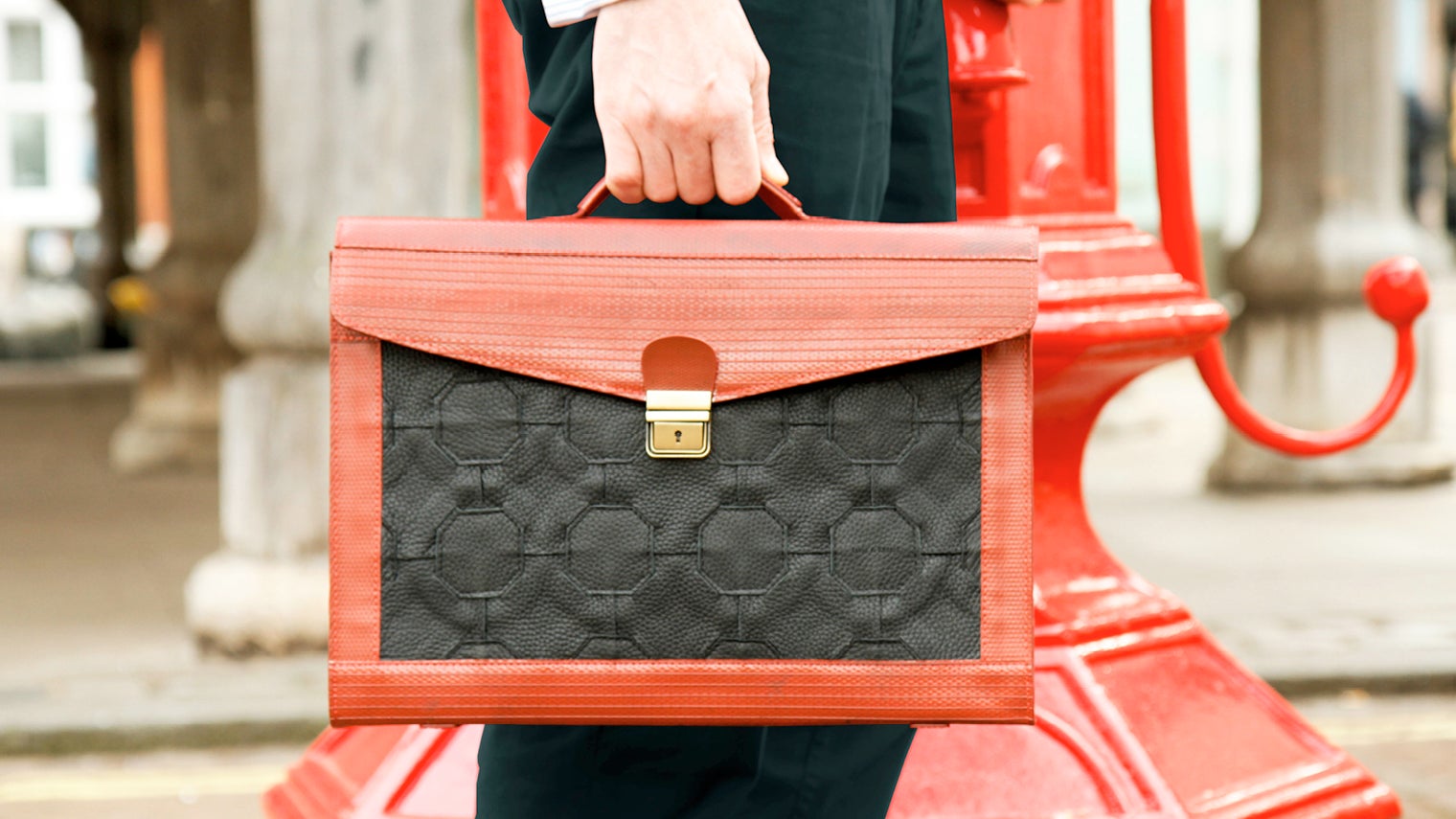1. Rapanui: cow poo and cloud tech
Founded a decade ago in a shed on the Isle of Wight, Rapanui now makes clothes from certified organic cotton, in a wind-powered factory and using low-waste print technology.
The company’s growing partners optimise use of rainwater, co-planting and insect traps, plus a special ingredient: cow poo. Its manufacturing supply chain employs renewable energy throughout, and recovers and recirculates wastewater cleaned to a standard good enough to drink.
Rapanui has pioneered a traceability tool allowing conscientious consumers to map their T-shirt, from seed to shop. The brand also pays people to return products for remanufacturing at end of life. It has even created a cloud-based platform called Teemill to share its circular supply chain online, for free.
Sustainability is a core business value and technology helps make it affordable, says Ishwari Thopte, fashion tech manager at the Centre for Fashion Enterprise. “With the help of technology driving an open-source approach, brands are now able to share products and services that find value beyond profit in an often insular and competitive industry. Rapauni’s Teemill service is an excellent example,” she says.
2. Deakin and Blue: swimwear from fishing nets
Described as transformational, Deakin and Blue produces ocean-friendly swimwear for women who not only wish to look and feel good, but might actually want to swim, too.
With suppliers certified to Oeko-Tex standards for textile products, costumes are produced in London from ECONYL yarn, a 100 per cent regenerated nylon fibre made from pre and post-consumer waste, including “ghost gear” of old fishing nets.
Unique to Deakin and Blue is a groundbreaking inclusive sizing system and the company eschews such regressive clichés of swimwear marketing as airbrushed, sexualised models, instead showcasing its garments on a range of body shapes and sizes.
According to Robert Blood, founder and managing director of the NGO tracking and issues analysis consultancy SIGWATCH, a challenge for brands is to meet the contradictory consumer demand for toughness, lightness and innovation, combined with more eco-friendly and natural materials.
“Reusing plastic waste is interesting. Another approach is replacing petroleum-based materials with modified natural ones,” he says. “Reebok recently won praise from animal rights group PETA for a ‘vegan’ non-plastic shoe made entirely from cotton and corn.”
3. Elvis & Kresse: waste leather and fire hoses
For Elvis & Kresse, the story began back in 2005, at a chance meeting with an unlikely source of raw material for a luxury accessories brand, the London Fire Brigade.
Having learnt how decommissioned damaged fire hoses headed to landfill, founders Kresse Wesling and James “Elvis” Henrit set out to rescue the resource.
For more than a decade now, no London fire hose has gone to landfill, with over 175 tons of material reclaimed.
In 2017, the Burberry Foundation teamed up with Elvis & Kresse to tackle leather waste. Their five-year partnership will see 120 tonnes of off-cuts recrafted.
Sustainable fashion needs success stories, says Susan Stevens, chief executive and founder of Made with Respect, a curated collection of handcrafted sustainable luxury brands.
“Providing full transparency and sustainability, while still making a profit is the main challenge ethical businesses face right now,” she says. “More and more brands, though, manage to find a balance and Elvis & Kresse is the perfect example.”
A social enterprise and certified B Corp, Elvis & Kresse donates half the profits from its fire-hose range to the Fire Fighters Charity.
4. Hugs & Co.: treading lightly with tyres
Marketed as the the British driving loafer, the new TS1 design from luxury footwear firm Hugs & Co. features as innovative sole made from upcycled tyre treads.
As well as providing improved durability and grip, the repurposed material requires only a fraction of the energy typically used to create new shoe soles, with production also generating just a tenth of the CO2.
Importantly, the design helps highlight the need to tackle the problem of waste tyres. In the UK alone, more than 100,000 tyres are taken off vehicles every single day, generating both serious environmental impact potential and significant material resource prospects.
Opening the door to creative, commercial responses, such as the TS1, the circular economy is ushering manufacturers and makers into the next world of materials, where leftovers await rediscovery as a source of value.
It can even do so with style, says Susan Harris, technical director at Anthesis. “Finding new uses for materials we used to think of as waste can not only lower costs, but also reduce environmental impacts and inspire a beautiful industrial aesthetic,” she says.
5. Gucci: aesthetics meet ethics with upcycled waste
Sustainable luxury is a matter of balance. At Gucci, the optimal combination of aesthetics and ethics is called “equilibrium”.
Gucci is one of the world-leading fashion brands that make up the Kering Group. A pioneer in reporting on impacts, Kering produces an environmental profit and loss (EP&L).
The EP&L measures carbon emissions, water, pollution, land use and waste along the entire supply chain, with an ambitious target to shrink its footprint 40 per cent by 2025. Focused on upcycling waste, Gucci Up reused 11 tons of leather scraps in 2018 and collected 92 tons of textiles.
This is sustainability at scale and responds to mainstreaming of both corporate responsibility and consumer awareness.
According to data from Wearisma, an influencer intelligence and analytics company, 14 per cent of influencers have mentioned sustainability-related topics in 2019 so far.
These numbers are significant, Wearisma chief executive and founder Jenny Tsai concludes. She says: “Sustainability is no longer simply a ‘trending topic’; its importance is now lodged in much of the public conscience, driving how influencers relate authentically to their audiences.”
1. Rapanui: cow poo and cloud tech

2. Deakin and Blue: swimwear from fishing nets



